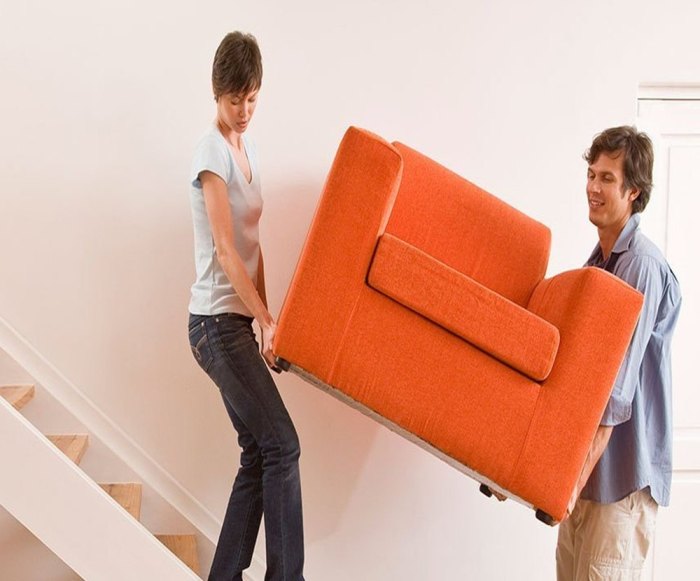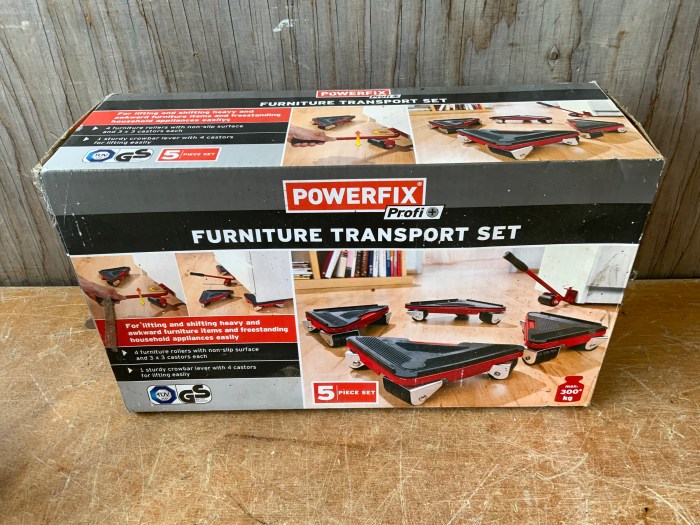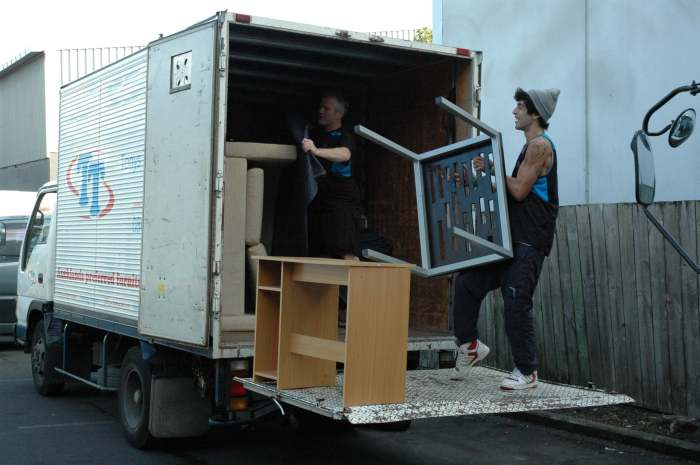Furniture transport is the process of moving furniture from one location to another. It can be a daunting task, but with the right planning and preparation, it can be done safely and efficiently. This guide will provide you with everything you need to know about furniture transport, from choosing the right company to packing and protecting your furniture.
Furniture Transport Overview
Furniture transport is the process of moving furniture from one location to another. It is a specialized service that requires careful planning and execution to ensure that your furniture arrives at its destination safely and undamaged.
There are many different types of furniture transport services available, each with its own advantages and disadvantages. The most common type of service is full-service moving, which includes packing, loading, transporting, and unloading your furniture. Other types of services include self-service moving, which allows you to pack and load your furniture yourself, and white-glove moving, which provides the highest level of service and includes additional services such as furniture assembly and disassembly.
The cost of furniture transport depends on a number of factors, including the distance of the move, the size and weight of your furniture, and the type of service you choose. It is important to get quotes from several different moving companies before making a decision.
Factors that Influence the Cost of Furniture Transport
- Distance of the move: The longer the distance of the move, the more it will cost.
- Size and weight of your furniture: The larger and heavier your furniture, the more it will cost to move.
- Type of service: Full-service moving is more expensive than self-service moving.
- Additional services: Additional services such as furniture assembly and disassembly will increase the cost of your move.
Planning and Preparation for Furniture Transport

Moving furniture can be a daunting task, but with proper planning and preparation, it can be done efficiently and without damage to your belongings. Here’s a step-by-step guide to help you plan and prepare for furniture transport:
Declutter and Sort
Start by decluttering and sorting your belongings. Get rid of anything you don’t need or use anymore, and decide which items you want to take with you and which ones you can leave behind. This will help reduce the amount of furniture you need to transport, making the process easier and more cost-effective.
Disassemble Furniture
Disassemble any furniture that can be taken apart, such as beds, tables, and chairs. This will make the furniture easier to pack and transport, and it will also reduce the risk of damage during transit.
Pack Furniture Properly
Use sturdy boxes and packing materials to protect your furniture during transport. Wrap each piece of furniture in bubble wrap or packing paper, and secure it with tape. Fill empty spaces in boxes with crumpled paper or foam peanuts to prevent items from shifting and breaking.
Choose the Right Furniture Transport Company
When choosing a furniture transport company, consider their experience, reputation, and insurance coverage. Get quotes from several companies before making a decision, and be sure to read reviews from past customers.
Prepare for the Move
On the day of the move, make sure to clear a path for the movers and provide them with any necessary instructions. Supervise the loading and unloading process to ensure that your furniture is handled carefully.
Furniture Transport Methods

Furniture transport involves moving furniture items from one location to another. Several methods can be used for furniture transport, each with its advantages and disadvantages.
Road Transport
Road transport is the most common method for furniture transport. It involves using trucks or vans to move furniture over roads.Advantages:* Flexibility: Road transport offers the most flexibility in terms of scheduling and routes.
Door-to-door service
Furniture can be picked up and delivered directly to the customer’s doorstep.
Cost-effective
Road transport is generally the most cost-effective option for short to medium distances.Disadvantages:* Traffic delays: Road transport can be subject to traffic delays, which can affect delivery times.
Limited capacity
Trucks and vans have limited capacity, which may not be suitable for large furniture items or large quantities of furniture.
Rail Transport
Rail transport involves using trains to move furniture over long distances.Advantages:* Large capacity: Trains can transport large quantities of furniture efficiently.
Cost-effective for long distances
Rail transport becomes more cost-effective for long distances compared to road transport.
Reduced environmental impact
When it comes to furniture transport, protecting your outdoor furniture is essential. Outdoor furniture custom covers provide the perfect solution, ensuring your furniture remains in pristine condition during transport. With these covers, you can rest assured that your outdoor furniture will arrive at its destination safe and sound, ready to enhance your outdoor living space.
Rail transport has a lower environmental impact than road transport.Disadvantages:* Limited flexibility: Rail transport is less flexible than road transport and may not be suitable for all locations.
Moving furniture can be a daunting task, but it doesn’t have to be. With the right planning and preparation, you can make sure your furniture arrives at its new home safely and undamaged. If you have any custom garden furniture, be sure to protect it with custom garden furniture covers to keep it looking its best.
Once you’ve taken the proper precautions, you can relax and enjoy your new furniture in your new home.
Longer transit times
Rail transport generally takes longer than road transport due to the need for scheduling and coordination.
Furniture transport can be a daunting task, especially when you need to move bulky items or fragile antiques. To ensure a smooth and stress-free move, consider hiring local furniture movers . These professionals are experienced in handling all types of furniture, from heavy sofas to delicate artwork.
They will carefully pack and transport your belongings, ensuring they arrive at your new home in pristine condition. With their expertise, you can rest assured that your furniture will be transported safely and efficiently, allowing you to focus on other aspects of your move.
Air Transport
Air transport involves using airplanes to move furniture over long distances.Advantages:* Fastest method: Air transport is the fastest method for furniture transport.
Suitable for long distances
Air transport is ideal for transporting furniture over long distances, especially across borders.Disadvantages:* Most expensive: Air transport is the most expensive method for furniture transport.
Limited capacity
Airplanes have limited capacity compared to trains or trucks.
Customs and regulations
Air transport may be subject to customs and regulations, which can add to the cost and complexity of the process.
| Method | Advantages | Disadvantages |
|---|---|---|
| Road Transport | Flexibility, door-to-door service, cost-effective for short to medium distances | Traffic delays, limited capacity |
| Rail Transport | Large capacity, cost-effective for long distances, reduced environmental impact | Limited flexibility, longer transit times |
| Air Transport | Fastest method, suitable for long distances | Most expensive, limited capacity, customs and regulations |
Furniture Transport Safety and Security
Furniture transport involves careful planning and execution to ensure the safety of your belongings and the well-being of those involved. This section emphasizes the importance of safety measures, insurance, and liability during furniture transport.
Safety Measures, Furniture transport
Follow these essential safety measures to prevent accidents and damage:
- Secure furniture securely with straps or ropes to prevent shifting during transit.
- Use blankets, padding, or bubble wrap to protect furniture from scratches and dents.
- Ensure all sharp edges or protruding parts are covered or protected.
- Handle heavy items with care and use proper lifting techniques to avoid injury.
- Secure doors and drawers to prevent them from opening during transport.
- Plan the route in advance to avoid potential hazards such as low bridges or narrow roads.
- Be aware of your surroundings and potential obstacles when loading and unloading furniture.
Insurance and Liability
Furniture transport carries inherent risks. Insurance and liability coverage provide financial protection in case of accidents or damage:
- Insurance:Obtain insurance coverage that specifically includes furniture transport. This covers potential damages to your belongings during the move.
- Liability:Ensure that the furniture transport company you hire has adequate liability insurance to cover any injuries or damages caused to third parties during the transport process.
Safety Tips Checklist
Review this checklist before furniture transport to ensure a safe and secure experience:
- Prepare furniture properly with protective materials.
- Secure furniture securely during transit.
- Handle heavy items with care and use proper lifting techniques.
- Secure doors and drawers.
- Plan the route in advance.
- Obtain adequate insurance coverage.
- Hire a reputable furniture transport company with liability insurance.
Furniture Transport Trends and Innovations

The furniture transport industry is constantly evolving, with new trends and innovations emerging all the time. These trends are being driven by a number of factors, including the rise of e-commerce, the increasing popularity of online furniture retailers, and the growing demand for sustainable and environmentally friendly furniture transport solutions.
One of the most significant trends in furniture transport is the increasing use of technology. Technology is being used to improve every aspect of the furniture transport process, from planning and scheduling to tracking and delivery. For example, many furniture transport companies now use GPS tracking systems to track their trucks and provide real-time updates to customers.
This technology helps to improve efficiency and reduce delivery times.
Another trend in furniture transport is the growing popularity of sustainable and environmentally friendly solutions. Furniture transport companies are increasingly looking for ways to reduce their carbon footprint and minimize their environmental impact. For example, some companies are using electric vehicles to transport furniture, and others are using recycled materials in their packaging.
Innovative Solutions for Furniture Transport
In addition to the trends mentioned above, there are a number of innovative solutions that are being developed for furniture transport. These solutions include:
- Automated furniture transport systems: These systems use robots to move furniture around warehouses and distribution centers. This can help to improve efficiency and reduce labor costs.
- Self-driving furniture transport trucks: These trucks are equipped with sensors and cameras that allow them to drive themselves. This can help to reduce the risk of accidents and improve delivery times.
- Furniture transport drones: These drones are used to deliver furniture to remote or hard-to-reach areas. This can help to expand the reach of furniture transport companies and make it easier for customers to get the furniture they need.
These are just a few of the trends and innovations that are shaping the future of furniture transport. As the industry continues to evolve, we can expect to see even more innovative solutions emerge.
Outcome Summary
Furniture transport is a complex process, but it doesn’t have to be stressful. By following the tips in this guide, you can ensure that your furniture arrives at its destination safely and on time.
FAQ Explained
How much does furniture transport cost?
The cost of furniture transport will vary depending on a number of factors, including the size and weight of your furniture, the distance it needs to be moved, and the time of year. You can get a free quote from a furniture transport company by providing them with this information.
How can I pack my furniture for transport?
There are a few things you can do to pack your furniture for transport to protect it from damage. First, wrap each piece of furniture in bubble wrap or packing paper. Then, secure the furniture with packing tape. Finally, place the furniture in a sturdy box or crate.
What should I do if my furniture is damaged during transport?
If your furniture is damaged during transport, you should file a claim with the furniture transport company. The company will investigate the claim and determine whether you are eligible for compensation.